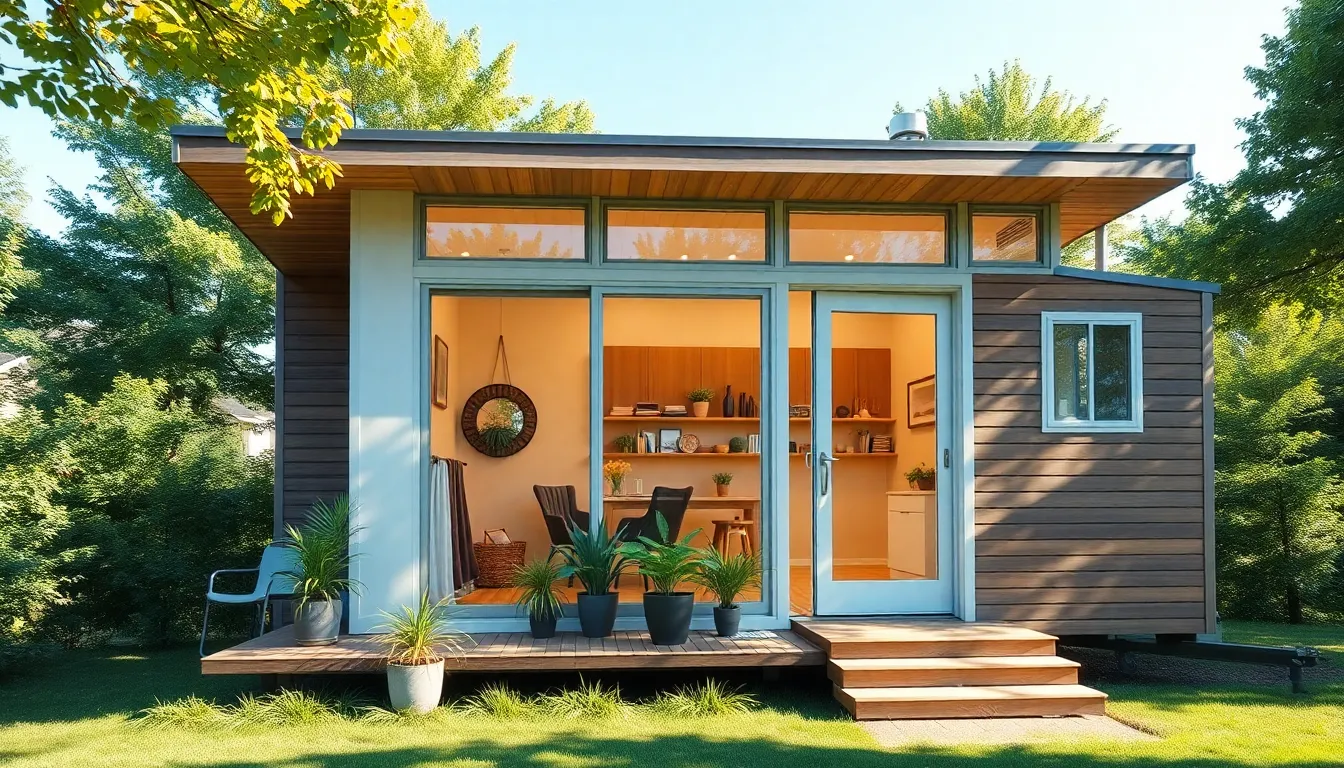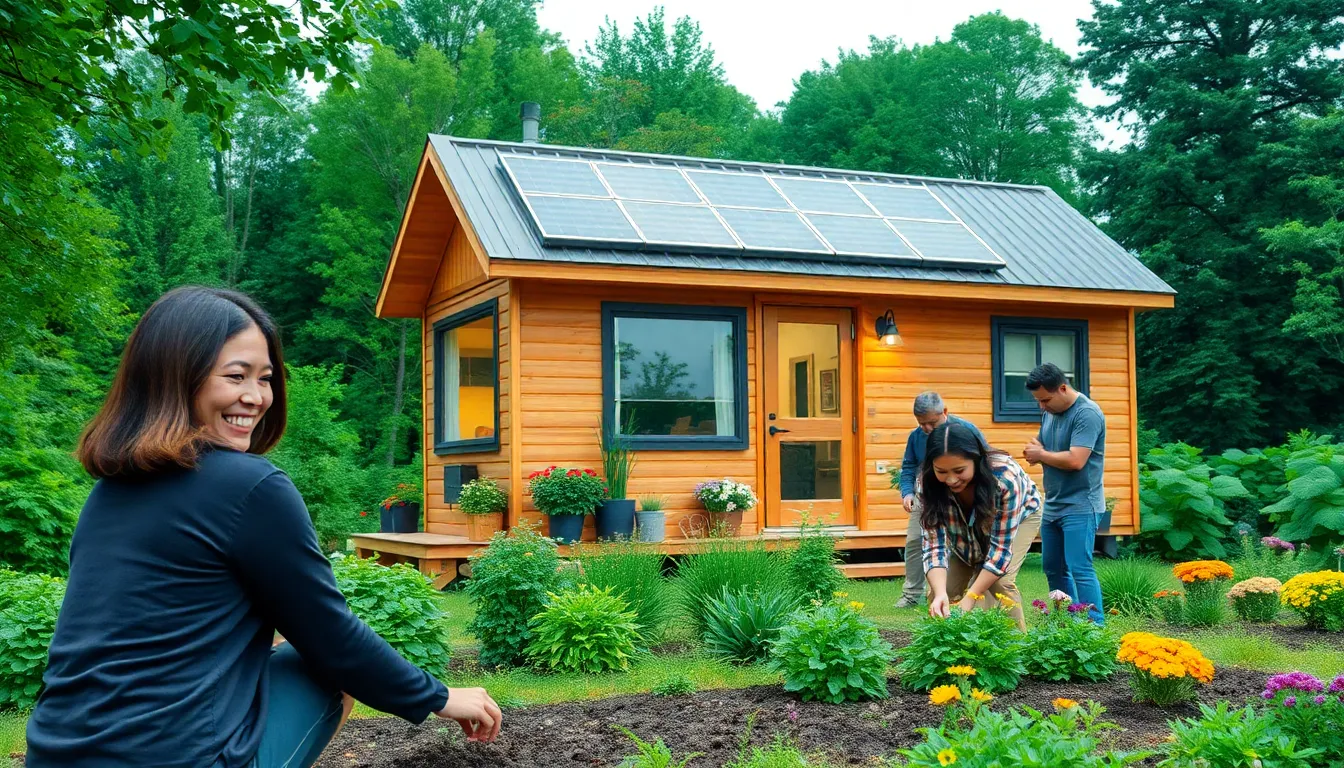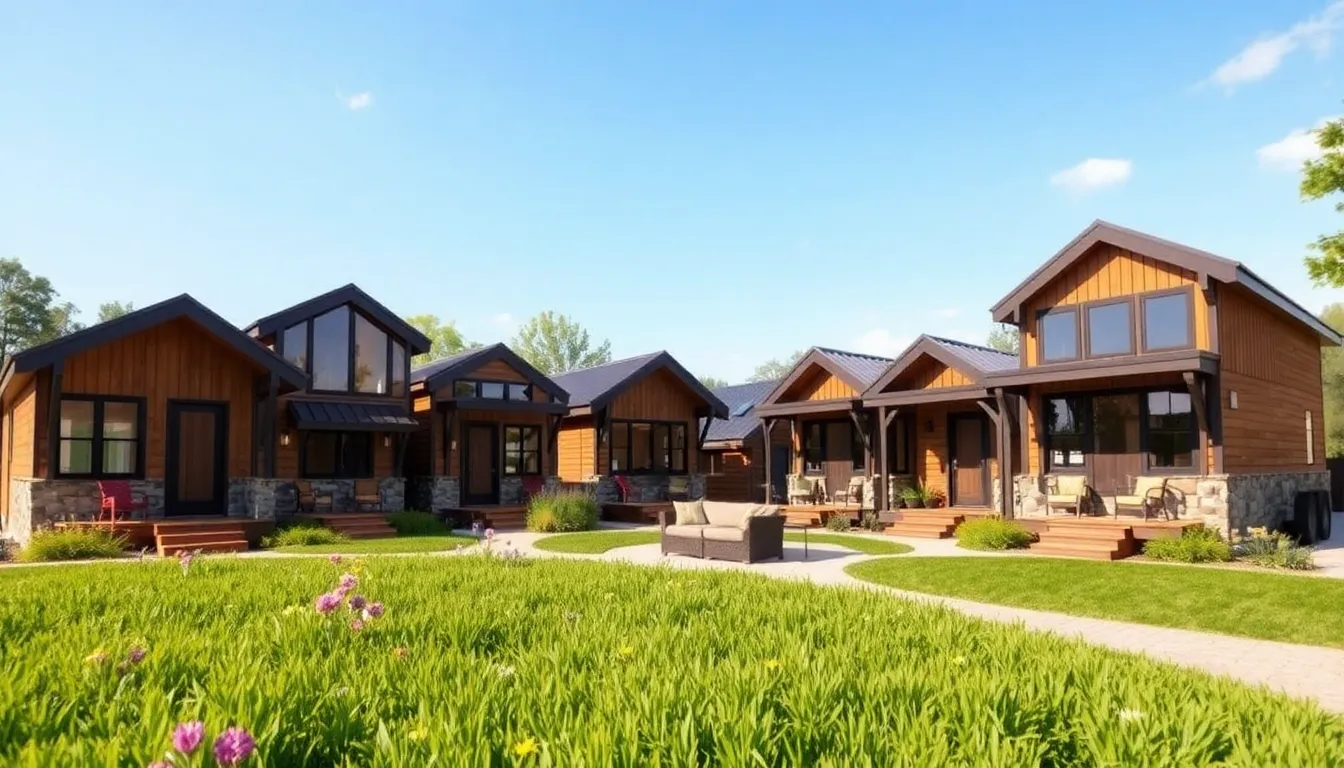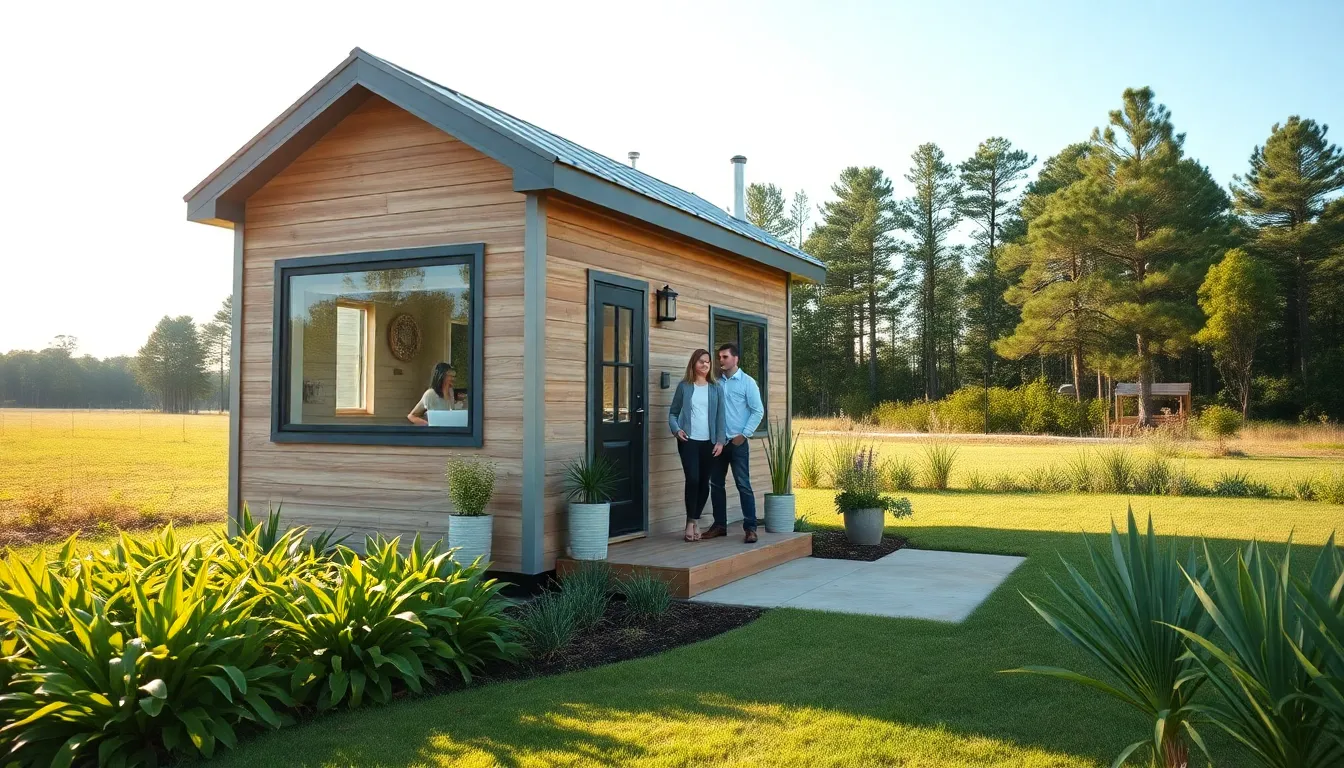In a world where bigger often seems better, tiny homes are flipping the script. These pint-sized powerhouses are proving that less truly can be more, offering creative solutions for those looking to downsize or simplify their lives. Imagine living in a space that’s not just cozy but also efficient, stylish, and surprisingly functional.
Table of Contents
ToggleOverview of Tiny Home Floor Plans
Tiny home floor plans prioritize efficient use of space while maximizing functionality. These designs reflect a shift towards minimalism and intentional living. Many floor plans include multi-purpose areas, such as combined living and dining spaces, to enhance usability. Furthermore, lofted sleeping areas often optimize vertical space, allowing for additional storage underneath.
Bathrooms in tiny homes typically feature compact fixtures. Full bathrooms come equipped with showers and composting toilets, while some plans include half-baths for guests. Kitchen layouts range from galley-style to open-concept, accommodating essential appliances while leaving room for creativity.
Tiny home floor plans often incorporate outdoor living elements as well. Porches and decks enhance the overall experience by extending the living area outdoors. Many designs include large windows to increase natural light and create an inviting atmosphere. Specific layouts cater to various lifestyles, accommodating families, singles, or retirees.
Sustainable practices influence the development of these floor plans. Builders frequently utilize eco-friendly materials, ensuring a smaller carbon footprint. Solar panels and rainwater harvesting systems often accompany modern tiny homes, promoting energy efficiency.
Each plan reflects residents’ needs and preferences, creating unique living experiences. Owners benefit from customized features that enhance accessibility and comfort. More plans allow for future modifications if family dynamics change or needs evolve. This adaptability significantly contributes to tiny homes’ increasing popularity.
Benefits of Tiny Home Living
Tiny homes provide unique advantages, contributing to a minimalist lifestyle while promoting efficiency and sustainability.
Sustainability and Environmental Impact
Sustainable practices drive the tiny home movement. Builders focus on eco-friendly materials, reducing overall carbon footprints. Energy-efficient features often include solar panels, enhancing renewable energy use. Smaller living spaces require fewer resources to build and maintain. Many designs incorporate better insulation, resulting in lower heating and cooling costs. By embracing minimalism, individuals can lessen waste through reduced consumption. Urban placements encourage reduced commuting, directly decreasing overall energy use.
Cost-Effectiveness
Cost benefits accompany the tiny home lifestyle. Lower construction costs attract many seeking affordable housing options. Minimal living leads to reduced utility bills, making budgets easier to manage. Homeowners often pay less in property taxes, considering the smaller footprint. Financing tiny homes presents fewer barriers due to lower overall expenses. Many find they can allocate funds towards experiences rather than possessions, enriching their lives. Overall, tiny homes offer a pathway to financial freedom through simplicity and efficiency.
Popular Tiny Home Floor Plans
Tiny home floor plans range from single-level designs to multi-level layouts, offering various options to meet different lifestyle preferences. These plans maximize space efficiency while ensuring functionality and comfort.
Single-Level Designs
Single-level designs prioritize accessibility and simplicity. These layouts often feature open concepts that create a spacious feel while minimizing walls. Living areas typically connect to kitchens, enhancing social interaction. Compact bathrooms utilize space efficiently, incorporating essential fixtures like sinks and showers. Such designs often include lofted beds for extra storage, maximizing vertical space without compromising comfort. Many single-level plans also emphasize large windows for natural light, enhancing the overall atmosphere.
Multi-Level Layouts
Multi-level layouts provide distinct living areas, enhancing privacy and functionality. These designs often feature raised sleeping lofts, creating a cozy retreat while reserving ground space for other activities. Kitchens in multi-level homes frequently include provisions for dining, fostering a communal atmosphere. Bathrooms can also be situated on different levels for added convenience. Elevated designs take advantage of views, incorporating balconies or decks that expand outdoor living. Flexibility characterizes these floor plans, allowing homeowners to adapt spaces to fit their needs.
Customizing Your Tiny Home Floor Plan
Customization plays a crucial role in creating the ideal tiny home. Tailoring the space allows homeowners to align their floor plans with personal needs and preferences.
Choosing the Right Layout for Your Lifestyle
Choosing a layout starts with assessing daily routines and activities. Single-level designs work best for those seeking simplicity and accessibility. Multi-level options suit individuals needing privacy or separate areas for work and relaxation. Prioritizing communal spaces enhances social interactions and maximizes functionality. Evaluating lifestyle requirements ensures that the chosen plan complements personal habits, making daily living efficient and fulfilling.
Adding Unique Features and Amenities
Adding unique features transforms a standard tiny home into a personalized haven. Consider integrating built-in storage solutions to maximize available space. Custom shelving and multipurpose furniture enhance utility and help maintain a clutter-free environment. Incorporating outdoor elements, such as an extended porch or garden, creates additional living space and promotes connection with nature. Energy-efficient appliances contribute to sustainable living while modernizing the kitchen. Personal touches, like color palettes and artistic designs, allow homeowners to reflect their individuality, enriching the overall living experience.
Tips for Maximizing Space in Tiny Homes
Utilizing vertical space remains essential in tiny homes. Build shelving units that extend to the ceiling for storage while keeping the floor area open. Incorporating lofted sleeping areas frees up ground space for living areas, enhancing functionality.
Multipurpose furniture proves invaluable. Invest in sofas that convert to beds or ottomans that provide hidden storage. Such pieces offer versatility without sacrificing style or comfort.
Open floor plans create a sense of airiness. Choose layouts that combine living and kitchen areas, encouraging fluid movement. Large windows allow natural light to enhance the illusion of more space.
Creative storage solutions maximize every nook. Opt for built-in cabinetry or under-bed storage to keep clutter at bay. Hooks and wall-mounted organizers add functional design elements while leaving floors clear.
Choosing lighter color schemes also contributes to an open feel. Soft hues on walls and furnishings reflect light, making spaces appear larger. Consider adding mirrors to create depth and amplify brightness.
Establishing defined zones helps maintain organization. Use rugs or furniture arrangements to delineate different areas within an open floor plan. Each section feels purposeful, yet still cohesive.
Lastly, incorporating outdoor living expands usable space. Design porches or patios as extensions of the home for relaxation or entertainment. These areas not only increase enjoyment but also enhance overall livability in tiny homes.
Conclusion
Tiny home floor plans embody a shift towards efficient living and sustainability. They provide unique solutions for those looking to embrace a minimalist lifestyle without sacrificing comfort or style. The versatility of these designs allows homeowners to tailor their spaces to fit personal needs while maximizing functionality.
With an emphasis on eco-friendly materials and energy-efficient features, tiny homes not only reduce environmental impact but also promote financial freedom. The trend reflects a growing desire for simplicity and intentional living, making tiny homes an appealing choice for many. As individuals continue to seek innovative ways to downsize, tiny home floor plans will undoubtedly play a crucial role in shaping the future of housing.








